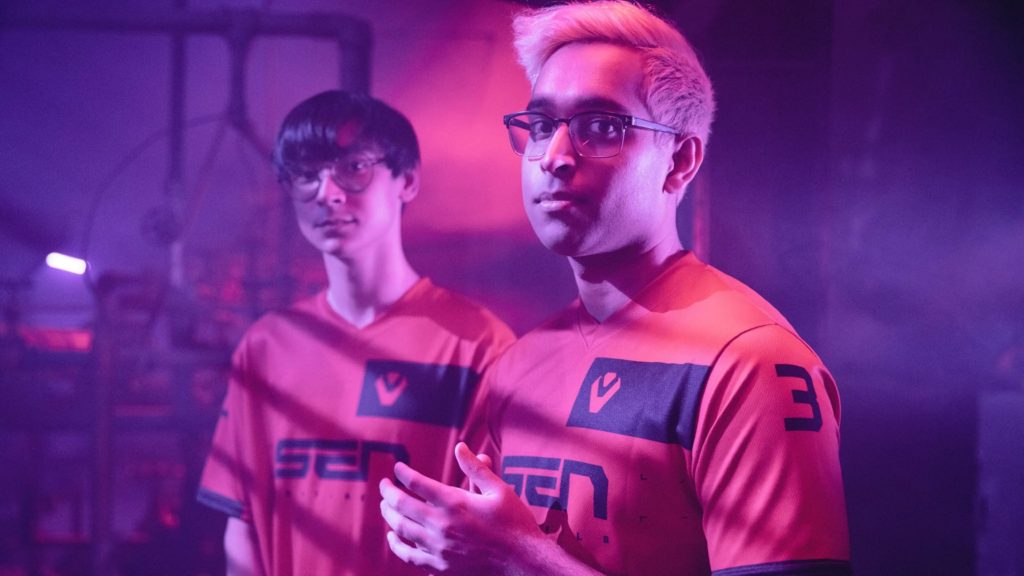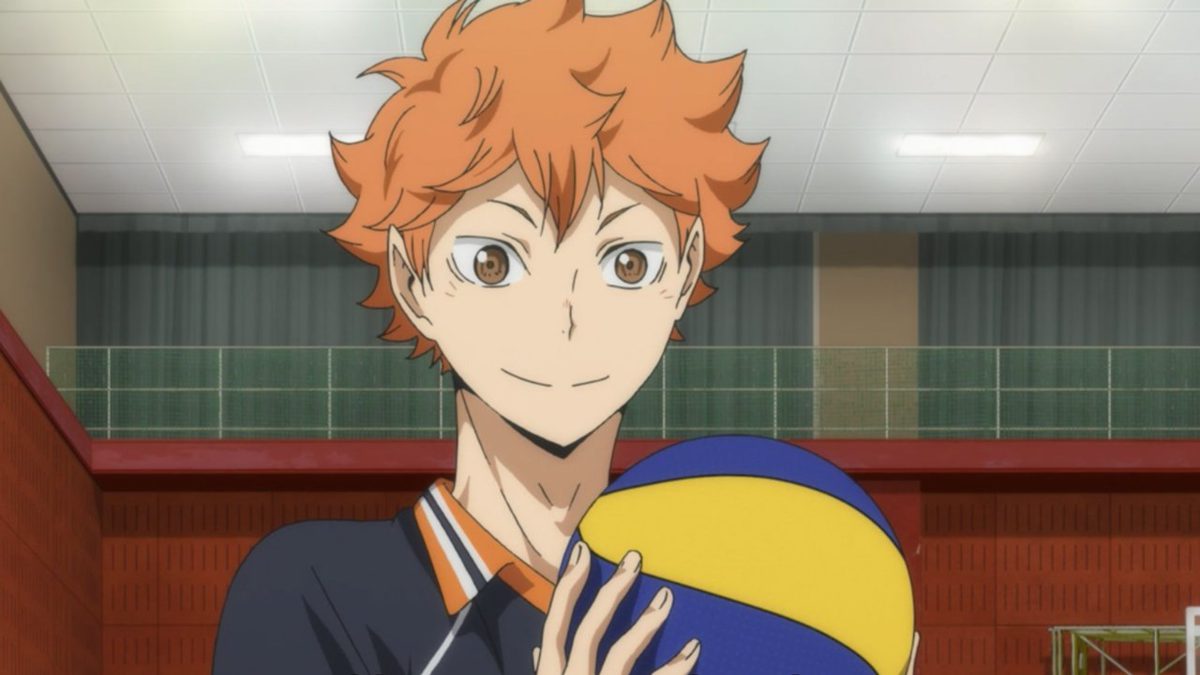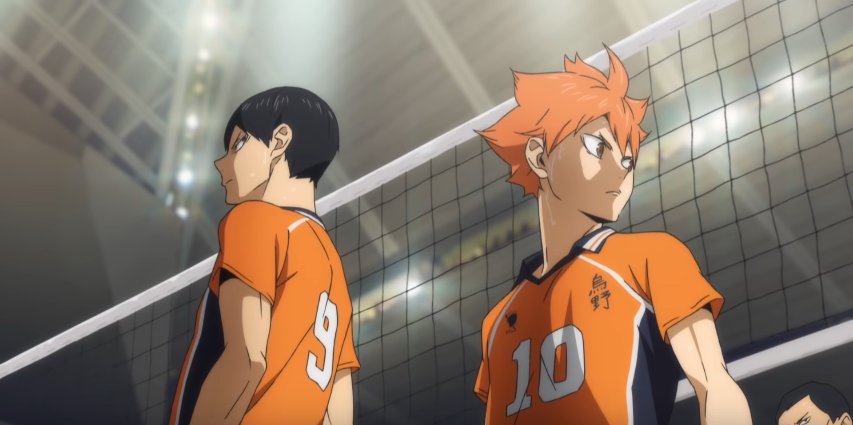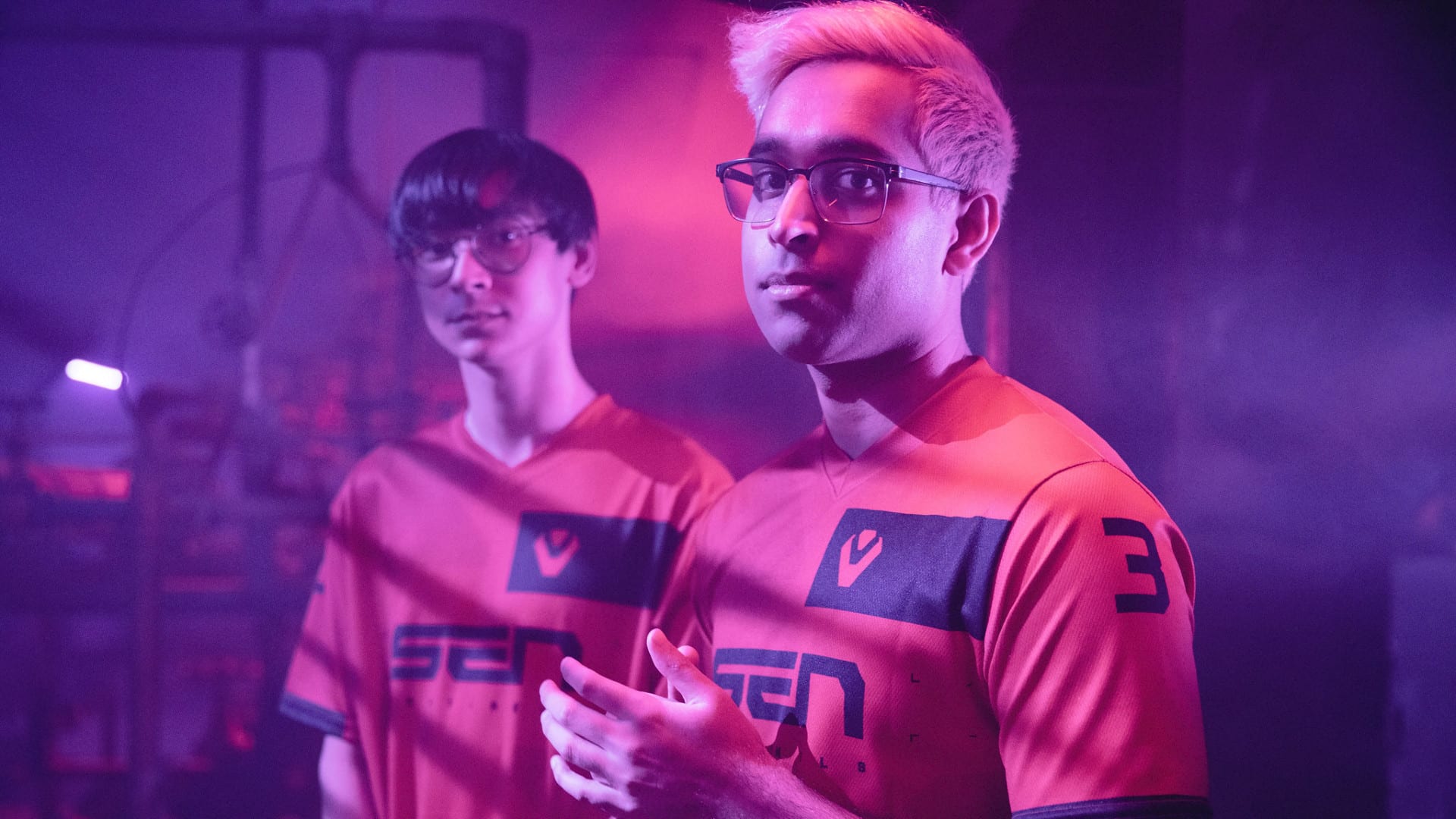
Image provided by Valorant Champions Tour
If You Watch Haikyu, You Can Watch Valorant
I’ve spent most of my life unable to understand the hype around watching sports. While I learned the rules of football vicariously by attending football games for my high school marching band, I did my best to retain as little information as possible because it was boring. While that particular feeling hasn’t gone away regarding football, I have had a change of heart when it comes to consuming sports content in general thanks to that age old motivator: anime.
We all have our pandemic hobbies and comforts, and mine became high school volleyball anime Haikyu. Following not only Hinata, but his whole team on their journey towards nationals helped me to finally understand why people get so invested in certain sports, and how they can care so much about simple games. It’s all about finding the stories you want to invest in.
The same, strangely enough, can be said for Riot’s latest title, Valorant. Originally, I started watching VCT (Valorant Champions Tour) events to try and gain a bit of knowledge for my job at an esports site. But watching the games, I started getting hooked because I could pretty easily pick up the rules of what was happening, and could eventually parse different strategies. Had I not watched Haikyu before coming to Valorant, I don’t know that I could have appreciated it the same way. So now I’m here to evangelize all you anime fans into Valorant fans, so I can have more people to watch with.
Volleyball, Valorant, Tomato, Tomahto

I know I’m not alone in the experience of learning the ins and outs of volleyball just by watching Haikyu. Having a game explained to you through the lens of a story or character you care about does a ton of heavy lifting to make the rules and strategies more digestible. The same goes for Valorant, and surprisingly, a lot of the terms in Riot’s FPS translate pretty cleanly to volleyball.
Like volleyball, Valorant matches are either best-of-three or best-of-five series. To take a round, a team has to be the first to 13 points in Riot’s FPS, rather than 25 like in volleyball. When there’s a tie, or a deuce in volleyball terms, Valorant matches go into overtime and teams must be two points ahead to win.
Teams are headed up by In-Game Leaders or IGLs, which for all intents and purposes are team captains. They keep the squad together and decide how to approach each opponent. Just like the various captains we see in Haikyu, the Valorant Champions Tour IGLs are varied in their personalities and playstyles. Sentinel’s ShahZam is cool and confident, while Fnatic’s Boaster is happy go lucky with a strong hunger for victory. The structure of the Valorant pro scene makes it as easy to follow these storylines as Haikyu.
A Non-Stop Tournament Arc

The action in Haikyu is almost entirely focused on tournaments, whether that be preparing for them, or the actual competition. Different seasonal tournaments ultimately culminate in the Nationals for our high school volleyball squads. Valorant isn’t all that different. Teams from around the world compete in regional tournaments for a chance at earning a spot in the Masters tournament. Teams that want to prove they’re the best of the best have to make it to the grand finals at a Masters event and win.
Watching your favorite team work to advance through each bracket, while simultaneously getting to know the other teams is a huge part of what makes Haikyu so captivating. Valorant is no different. While there are plenty of rivalries in the scene, the players all seem to have a lot of respect for each other, and success just makes the others hungrier to win next time–which leads us to our next point.
Storylines Aplenty
The real reason people care about sports and sports anime is because of the stories that come from these games. No classic sports movie is about the game alone; they’re about the players involved and their motivations coming to the game. Haikyu is obviously much the same, providing storylines across ages and schools.

Do you love the rivalry between Karasuno and Seijo? Check out the rivalry between NA and EU Valorant (and honestly all esports) teams. Sentinels completing a perfect run through the first-ever Valorant LAN (in-person) tournament to take down both EU teams –plus teams from other continents as well– and make NA esports champions, finally, was as exhilarating as watching Karasuno take down Seijo in the semi-finals.

Are you more into the underdog angle? How about Version1, the North American team that came out of nowhere to qualify for Masters 2? Or, maybe you’re a big fan of Tadashi our (eventually) fearless pinch setter. Then let me introduce you to Jamal “jammyz” Bangash, a Version1 player who had to step up and compete in Masters 2 after one of the team’s starters had to drop out. If you’re more of a charismatic leader type, no one compares to Fnatic’s in-game-leader Jake “Boaster” Howlett. He’s known for both his skill as a leader, and his charmingly silly personality which is constantly on display.
No matter what you’re into when it comes to a sports storyline, Valorant has you covered. And if you can learn what a C-quick is, you can learn what it means to take A.






1 thought on “If You Watch Haikyu, You Can Watch Valorant”